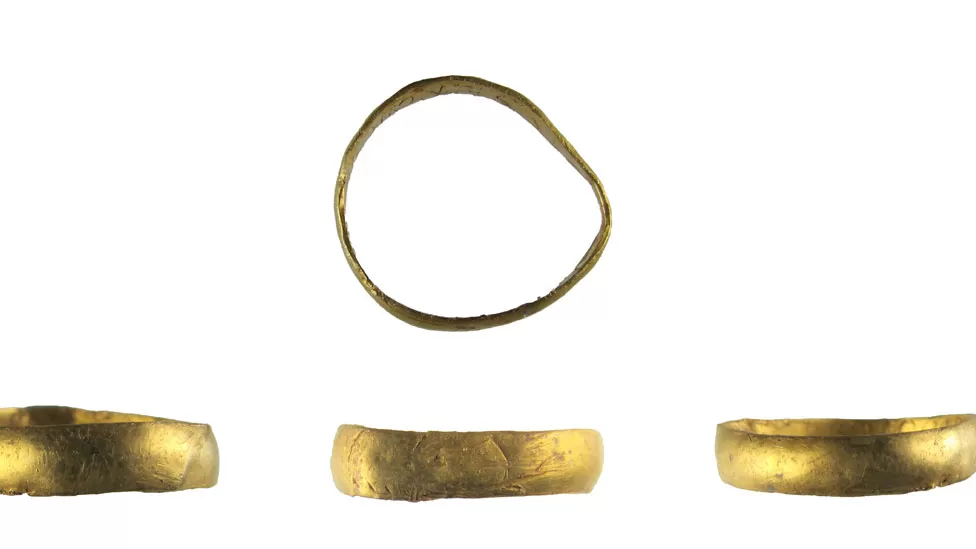The story of a 17th Century knight and his women has been revealed after a detectorist discovered a gold ring.
The ring was made to flash back Sir Mark Guyon of Great Maplestead, Essex. It was set up about 10 long hauls down.
During her exploration, finds liaison officer Lori Rogerson realised his alternate woman's form book is still held by Essex Records Office.
The discovery has exfoliate light on Sir Mark and his family, a man who" easily wanted to be flashed back ", she said.

The battered ring was engraved with a cranium and the letters" Sr MG KT" and the date" 28 October 90".
Research linked this to Sir Mark Guyon, who was born the son of a fat Coggeshall clothier in 1635 and failed at Dynes Hall, Great Maplestead, in 1690.
Miss Rogerson said" We've more records of people who had advanced positions, which allows us to make a more detailed picture of the person commissioned the ring."
Sir Mark was made sheriff for Essex in 1675, was a justice of the peace in 1678 and was buried at St Peter announcement Vincula Church, Coggeshall.
The discovery was a mourning ring, one of a number he commissioned to be made after his death, intended to be worn by musketeers or family in his memory.
Similar rings were most popular between 1650 to 1750.

While probing Sir Mark's life, Miss Rogerson came across the form book, for drugs as well as food, written by his alternate woman, Abigail Abdy.
Its fashions include cordial water which, the book said, was" good against any infection, as the pest, small spell", as well as those for macaroons and sugar cutlet.
She failed aged just 35 in 1679, presumably of pest.

Miss Rogerson said" What makes the ring more intriguing is knowing he'd people close to him that failed.
" He easily wanted to be flashed back and the mourning rings were an immediate way of telling loved bones,' Flash back me but also flash back that your own life is fragile so make the utmost of it'."
The discovery has been declared treasure by a coroner and Braintree Museum hopes to acquire it.
